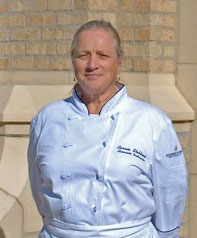Chefs Speak Out: A Green Thumbs up
Monday, 04 March 2013 00:16
 Like the many herbs cultivated for healthy, flavorful dishes and cocktails at the new Seasons 52 in West Los Angeles, executive chef and partner Jessica Koine finds a place to grow.
Like the many herbs cultivated for healthy, flavorful dishes and cocktails at the new Seasons 52 in West Los Angeles, executive chef and partner Jessica Koine finds a place to grow.
By Lynn Schwartz
It is not unusual for chefs of small, independent restaurants to be committed to a seasonal menu. They often support local farms and farmers’ markets in an attempt to bring the freshest ingredients to their customers. But it is impressive when a corporate, multiunit company is forward-thinking enough to practice a similar sustainable philosophy.
Seasons 52 (a brand of Orlando-based Darden Restaurants, Inc., the world’s largest full-service restaurant company, including Red Lobster, Olive Garden and The Capital Grille) is capitalizing on the growing consumer interest of eating with the seasons. Not only does Seasons 52 purchase locally, but they are dazzling customers with an extensive, indoor herb garden and a spectacular outdoor “living wall” of culinary and non-edible plants. As executive chef of the recently opened Century City venue in the heart of West Los Angeles, Jessica Koine must create seasonal, health-oriented dishes that are less than 475 calories. She must also cultivate her green-thumb abilities while tending to more than 150 edible plants.

 Assigning students to write a white paper can help them focus on an audience, develop an appropriate voice, learn to make a solid case with evidence and conduct careful research.
Assigning students to write a white paper can help them focus on an audience, develop an appropriate voice, learn to make a solid case with evidence and conduct careful research. S
S Rotating groups through learning modules keeps students engaged while enhancing their skills development.
Rotating groups through learning modules keeps students engaged while enhancing their skills development. Coors Recycles® teams up with Recyclebank® to reward consumers for their environmental efforts.
Coors Recycles® teams up with Recyclebank® to reward consumers for their environmental efforts.